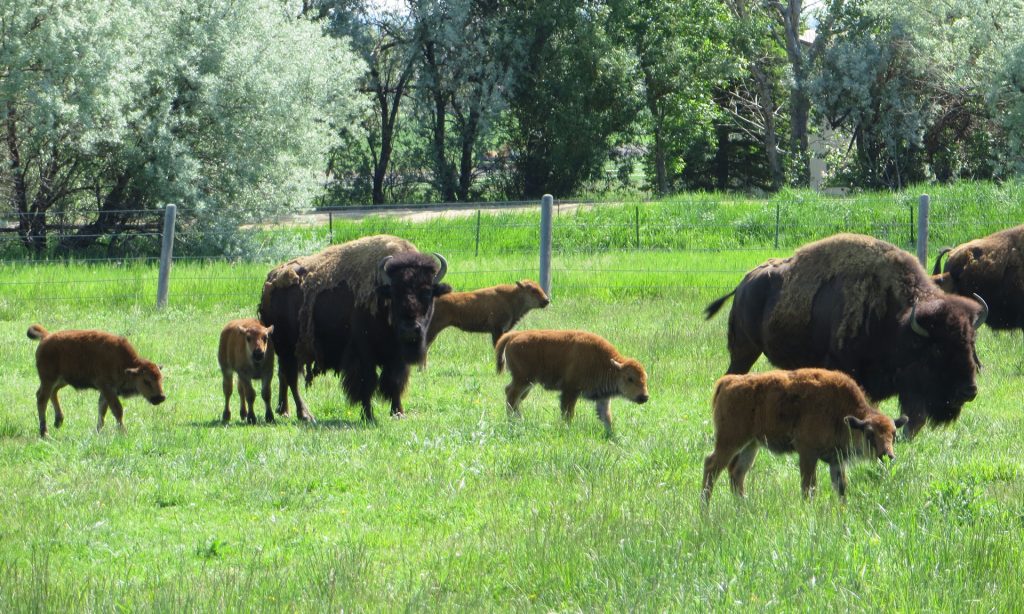Did you know that 40 percent of Boulder County’s open space is privately owned? As you travel throughout the county, you may notice how the cities and towns are separated by land still in agricultural production, or a beautiful mountain ridgeline unobstructed by the sight of houses. Many people are aware that Boulder County owns and manages much of the open space that makes our county a special place to live. But what people may not know is that over 40,000 acres have been conserved thanks to landowners who have made the decision to protect their land with a conservation easement.
What is a Conservation Easement?
A conservation easement is a legally binding agreement between a landowner and qualified organization that restricts how the land can be used and/or developed. This agreement “runs with the land,” which means that when the property sells or transfers, it passes on to the next owner.
Each conservation easement is written to protect the important conservation values of that property, such as natural features or habitats, agricultural land, and/or scenic open space. The qualified organization, in this case Boulder County, holds the conservation easement in trust for the public to ensure that the land is protected from development or other uses that may harm the conservation values. However, the landowner continues to privately own and manage the property. In fact, most people will never know that a property has become a part of the county’s open space program except to notice that it has remained relatively unchanged over the years.
A History of Preservation
The Boulder County Comprehensive Plan was adopted in 1978, and through citizen input and independent studies, helped prioritize natural resources across the county for protection. Some of Boulder County’s first conservation easements came through the rural subdivision process, when the Land Use Department allowed a developer greater housing density in exchange for granting a conservation easement over 75 percent or more of the land. Then after the first open space sales tax passed in 1993, Boulder County was able to start purchasing conservation easements using public funds. The county has also received donated conservation easements over the years, where the landowner relies on state and federal tax benefits designed to promote the preservation of open space. Still other conservation easements have been created through regulatory processes such as the Transferrable Development Right Program (TDR Program). The TDR Program allows landowners to lift development rights off of their land and send them to be used in areas that have been identified as more suitable for development, in exchange for a conservation easement on their property. These are only a few of the ways that the county has acquired conservation easements over the last 40 years, and a few ways it continues to acquire new ones every year.
Stewardship – A Forever Job
When a qualified organization agrees to be the “holder” of a conservation easement, they are taking on the perpetual responsibility to ensure that the terms of the agreement are forever upheld. At Boulder County, our stewardship team at Parks and Open Space heads into the great outdoors to monitor the county’s conservation easement properties every summer.
During these site visits, we document the condition of the property, look for anything that has changed, and talk with the landowners to discuss their future plans. If a landowner needs help controlling invasive weeds, implementing grazing plans, or figuring out how to best irrigate their property, our team connects them with the right resources. We may look to CSU Extension Services, the Natural Resource Conservation Service office, or our very own Parks and Open Space staff that manage county-owned open space. These partnerships, together with good stewardship practices and dedicated landowners, help conservation easement properties maintain their conservation values over the years.
A Confident Outlook
Looking towards the future, stewardship of Boulder County’s conservation easement properties will be more important than ever. Colorado’s State Demography Office projects that the population in Colorado will nearly double to 8.5 million by 2050. As local planners determine the best places to absorb this anticipated growth, the conservation values that the citizens of Boulder County identified as important are being protected, even as conservation easement properties change hands from one landowner to the next. This effort, together with the preservation of public lands, will ensure that Boulder County remains a special place to live.



